The history of butchery
(or what have the Romans ever done for us?)
Did you know that the trade and craft of butchery as we know it today was introduced to the British Isles by the Romans? As settlements increased in size and towns developed it was less practical for individual families to keep livestock and cull their own animals for meat.
The Romans brought new skills and a savvy eye for what the new town dwellers needed that paved the way for commercial meat production. They may even be responsible for introducing us to sausages, and where would we be without bangers and mash?
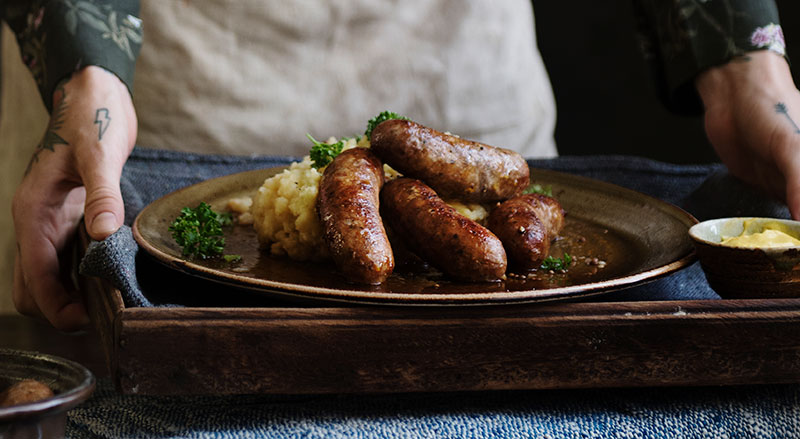
The Roman influence on butchery
In 2019 an archaeological dig in Devon excavated a ditch filled with cattle bones that were 1700 years old. The evidence suggests it was a 4th century butcher’s shop. For one thing, their cattle were around 1.5 years old and in their prime for beef. If they’d been used for ploughing, for example, they’d have died much older. Secondly, the remains discovered were mostly heads and feet so the animals were probably used for prime beef cuts, which were then transported for sale (and that makes sense, because we all know the Romans were good at roads).
Some argue that Roman butchers were all about speeding up the process: using tools and honing their skills to reduce the number of slices needed for each carcass. It sounds to us like the Romans pretty much set the bar for butchery as a profession: they wanted to produce more good quality meat, for more people, more quickly. We can get behind that, maybe we should get ourselves some togas?
Butchery in Medieval times
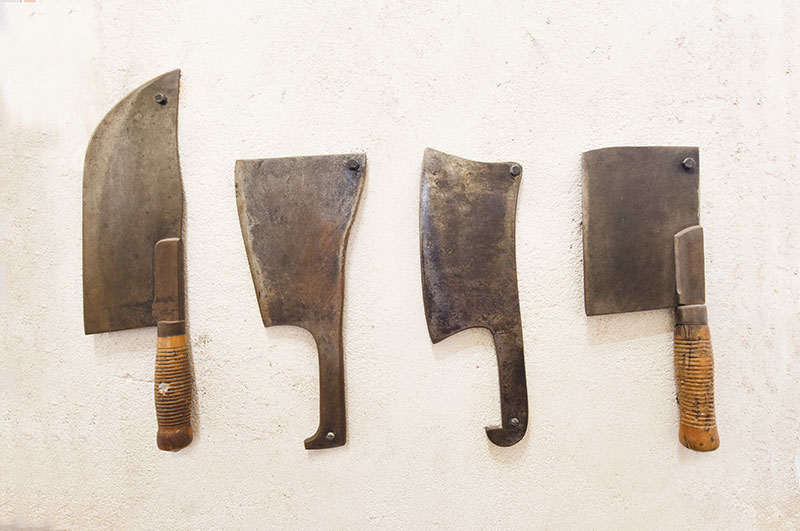
After a strong start from the Romans, butchery in the Medieval period was firmly established as a highly respected trade and a butcher’s knowledge of anatomy put them almost on a par with a doctor. A Medieval butcher was knowledgeable about the many cuts of pork, mutton and beef as well as poultry and game.
Butchers organised themselves into guilds early so we’re clearly a sort who’ve always taken pride in our work. There are records of butchers’ guilds in York going back as far as 1272 with two men named as Freemen Butchers. Many guilds created their own industry regulation with standards of conduct that they policed, to ensure all meat was safe to eat. Butchers discovered selling or trying to sell old or rotten meat faced fines or time in the pillory, which was a good incentive not to do it!
For customers, the kind of meat you ate was determined by your wealth, which in turn was dictated by your social status. The nobility would buy the best cuts of meat and enjoy large roasts during their feasts. Peasants couldn’t afford the large, choice cuts and may have eaten meat in the form of stews or as part of a festive celebration.
More meat for more people in the Victorian age
The Victorian era saw another round of population growth and fewer people living in rural areas with farms or livestock. The growth of towns increased trade for butchers and meat became available and affordable to many more people. With no home refrigerators yet, a trip to the butcher for fresh meat became part of daily routine for town dwellers.
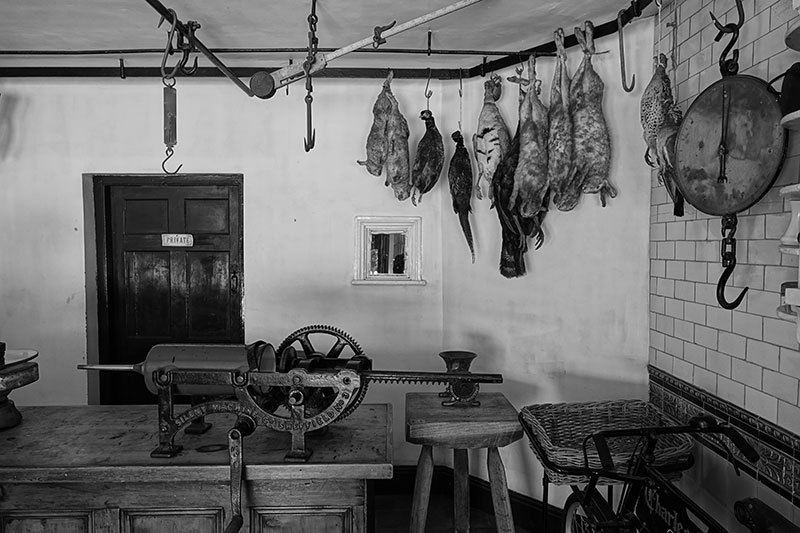
The ‘meat divide’ between the rich and poor still existed, but Victorian butchers were offering more options to suit different budgets. The idea of using the whole animal, already part of the butcher’s consciousness, became more important because it gave more choice. Roasting joints and prime cuts, many of the well known meat cuts we know and use today, were still consumed by the wealthy. The less desirable cuts were used for sausages and stews giving a cheaper source of meat. For the poorest in society, salted fat and meat bones were popular to add flavour and calories to soups.
Butchery in the 20th century
In the early 20th century (and possibly earlier, toward the end of the Victorian age) butchers started adopting the traditional clothes that many of us still remember. You would recognise a butcher by their striped apron, white shirt, dark trousers and straw boater hat.
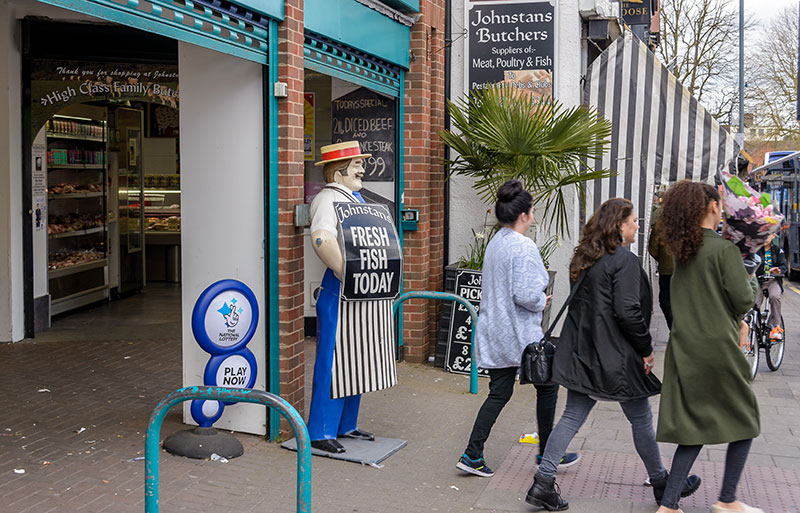
When rationing came in with the First and Second World Wars, butchers had to adapt again. By making more pies and sausages, they made the meat they had go further and rose to the challenge of making sure everyone in the UK had access to meat.
Unfortunately, the rise of the supermarkets following the Second World War put a number of local butchers out of business. We could now all get our meat easily from the supermarket, but by the end of the century it was much harder for the end customer to talk to anyone who really cared about the provenance and quality of the meat they were selling.
We understand the pressures of time and budgeting, as you know that our mission is to provide the best products at the best prices for all our customers. Yet when you think how important butchery has been to the growth of towns and populations across Britain, it’s a little sad that the industry went into widespread decline.
The butchery trade now
However, having developed their craft and served their customers well for hundreds of years, that was never going to be the end for butchers. Meat preparation will always be needed and only last year the UK was flying in trained butchers from the Philippines to make up for a shortfall in EU workers. It’s a case of how we provide the best service for the people that need us.
A large shift has been due to better preservation methods developed during the late 20th and early 21st century. Primary and secondary butchery can now easily happen on different sites and this has created a shift in the supply chain.
- Primary butchery involves the first separation of meat from the carcass done in a way that gets the most from it, resulting in the primal cuts (not the same as “prime cut”).
- Secondary butchery is the boning, trimming and other preparation that makes primal cuts ready for sale.
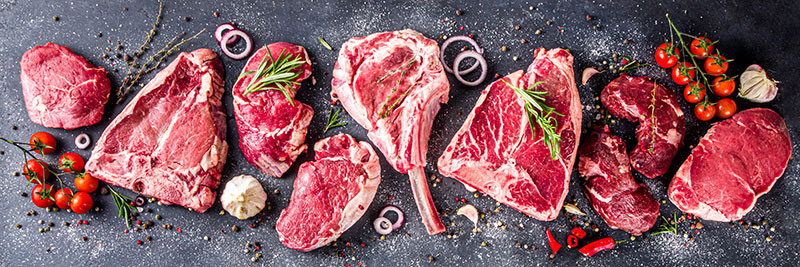
Examples of primal cuts for beef include:
- Beef round
- Beef loin
- Beef rib
- Beef chuck
(Pssst – if you get stuck with butchery terms, see our A-Z Meatindex. Never say we’re stingy with sharing our knowledge!)
Meat wholesalers, like ourselves, are instrumental in securing the best priced cuts from the secondary butchery process and making it easy for caterers, manufacturers and retail butchers to source what they need at a price that makes sense.
Butchery is thought of as old-fashioned so we broke the mould with the Meatex online meat portal, letting customers log in to see prices and buy online. We’re also delighted to see the rise of the local butcher shop again over the last few years as consumers become more interested in knowing where their meat is coming from.
Contact the Meatex customer service team for all your butchery needs or browse our products page for inspiration.